"Heater Of Hope" Brings Respite To Women And Wildlife By Reducing Fuelwood Consumption In Bramhapuri, India
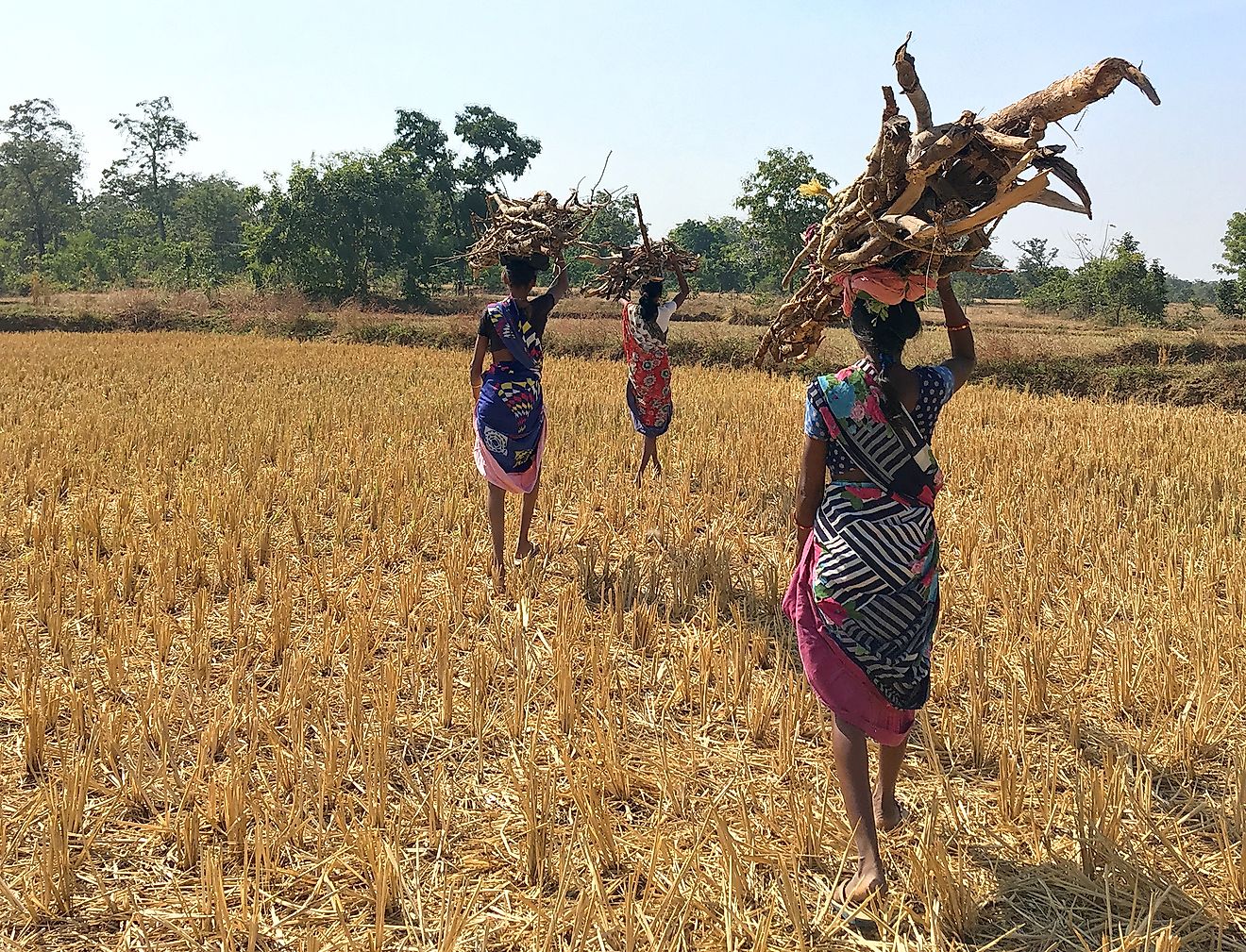
People have collected firewood/fuelwood from forests for ages. Today, most of the developed world has transitioned into using coal and natural gas-based fuel for heating, and that has its own stories of horror. However, firewood continues to be a necessity for millions in developing nations. With human populations growing in leaps and bounds in such countries, the practice of woodcutting for firewood collection becomes one of the biggest atrocities perpetrated against the already degraded forests and their wild inhabitants.
India is no exception. It is a country with the world's second-highest population. It is set to bag the first position in 2027 by surpassing China. And India has a vast stratum of marginalized communities living inside or along the peripheries of the country's forested lands. For them, firewood is the primary energy source for cooking and water heating. Their growing numbers, shift towards individualism, and increasing incomes are all fuelling a sustained and widespread use of firewood - a major driving force behind deforestation. Fuelwood is also highly hazardous to human health. With women being primarily responsible for firewood collection and usage for cooking and water heating, their health is under severe threat.
Under such circumstances, long-term solutions like India's "Heater of Hope" (a water heater that is locally known as the bumbb) become the need of the hour. Based on a project designed and implemented by one of India's leading wildlife conservation NGOs, the Wildlife Conservation Trust (WCT), the bumbb offers hope of respite from the ills of fuelwood consumption.
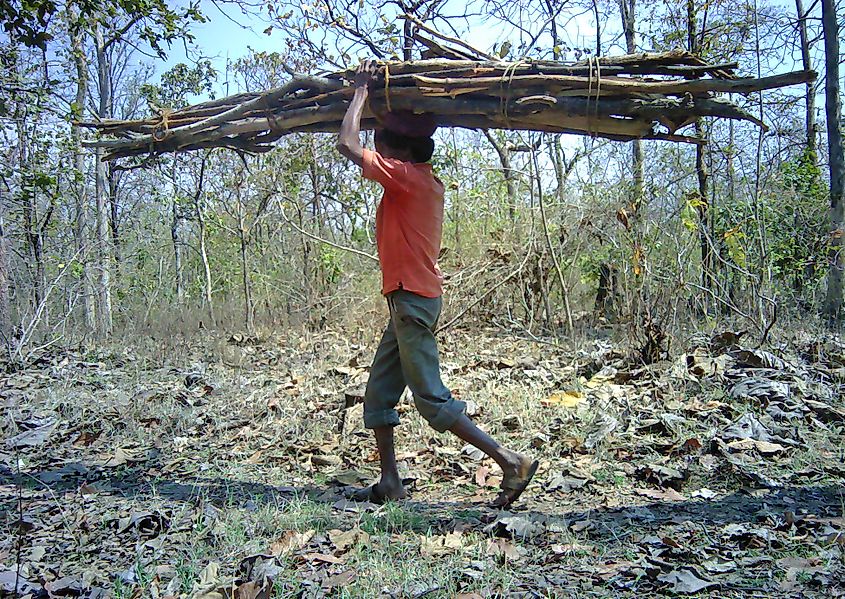
A village local captured on one of WCT’s camera traps collecting firewood from the forest in Bramhapuri Forest Division, Maharashtra. Photo credit: WCT
"Over 300 million people are dependent on India's protected areas for some percentage of their fuelwood intake. They primarily belong to doubly marginalized communities with little or no access to alternative energy sources like LPG cylinders. Firewood is a freely accessible resource at their doorstep and they make the best use of it. On average, a family of five uses about 10 kgs of wood a day. One can imagine the kind of pressure this subsistence activity puts on finite forest land," informed Dr. Anish Andheria, President of WCT and one of India's leading wildlife conservationists.
For years, WCT's interdisciplinary team of researchers has been earnestly working in and around protected areas across 23 Indian states to conserve biodiversity and prevent human-wildlife negative interactions in a rapidly changing environment. Among the many landscapes where the team has implemented their projects, the Bramhapuri Forest Division in the state of Maharashtra has been one of the most challenging ones. Spanning over 1,100 sq. km, it is a mosaic of densely populated human settlements and degraded forest patches housing around 50 adult tigers. It connects the tiger-rich Tadoba-Andhari Tiger Reserve with protected areas in neighboring states. Although not part of India's network of protected areas, the Bramhapuri Forest Division and its surroundings (part of the Greater Tadoba Landscape or GTL) serve as a vital corridor for wildlife movement from one protected area to another across state boundaries. Such distribution of wildlife is essential for the maintenance of the health and genetic diversity of their populations.
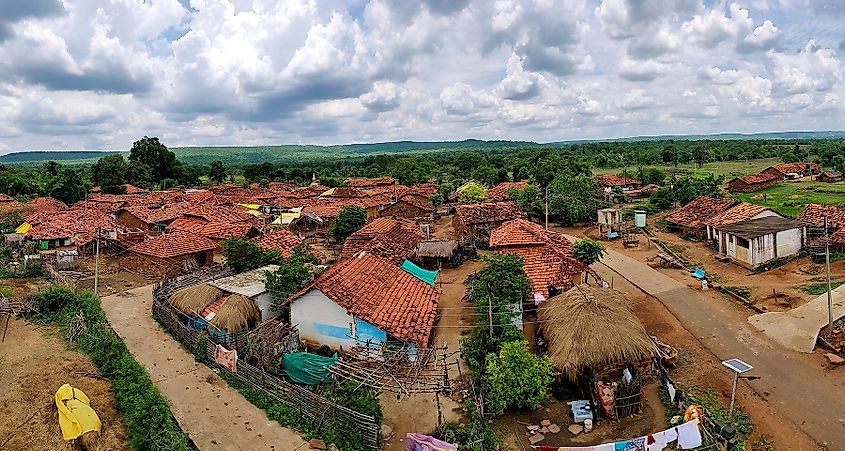
"The Bramhapuri division is a forested landscape where nearly 610 villages exist alongside a healthy large carnivore population. It has one of the highest tiger densities of the non-protected areas of India. For years, WCT has monitored the populations of large carnivores in this area. Our in-depth studies made it clear that the forests here were rapidly degrading, increasing the frequency of negative interactions between people and wildlife. We understood that if the situation spirals out of control, it will result in casualties on both sides. So, Bramhapuri became a natural choice for carrying out interventions based on sound scientific research to implement solutions that would be a win-win for both people and wildlife," Dr. Andheria explained the original reason behind the selection of the forest of Bramhapuri as their study area.
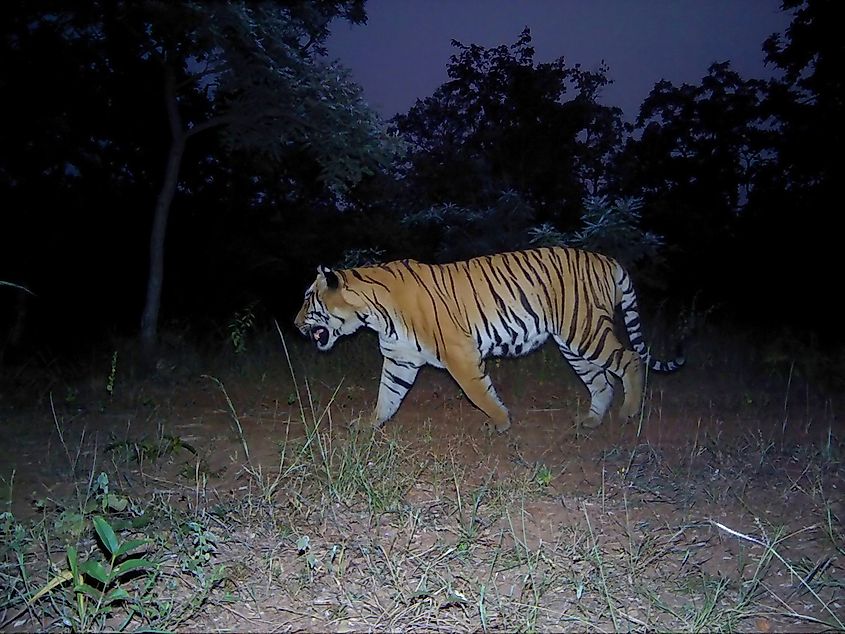
But deciding on the actual intervention was not easy as the area was riddled with a multitude of complex issues adversely affecting both the people and wildlife sharing space together.
"The villages are located in a challenging area where the people have to deal with day to day struggles including negative interactions with wildlife. Understanding their perception thus becomes important for the implementation of a solution," informed Prachi Paranjpye, Social Psychologist with the Conservation Behaviour Department of WCT.
After years of painstaking studies and brainstorming sessions, the WCT team finally knew their first target - reducing the firewood collection from the fast-disappearing forests of Bramhapuri.
"Our studies indicated that there were high chances of human-wildlife conflicts flaring up in the Bramhapuri area in the near future. So, we wanted to understand the major factors that drove people to the forests inhabited by large carnivores like tigers and leopards. Firewood collection then came to the spotlight. The demand for firewood was so high that people risked their lives to enter the forests for firewood collection. So, we decided to explore the structure and drivers of this demand to look at ways to address the issue," informed Aniket Bhatkhande, Head of WCT's Conservation Behavior Department.
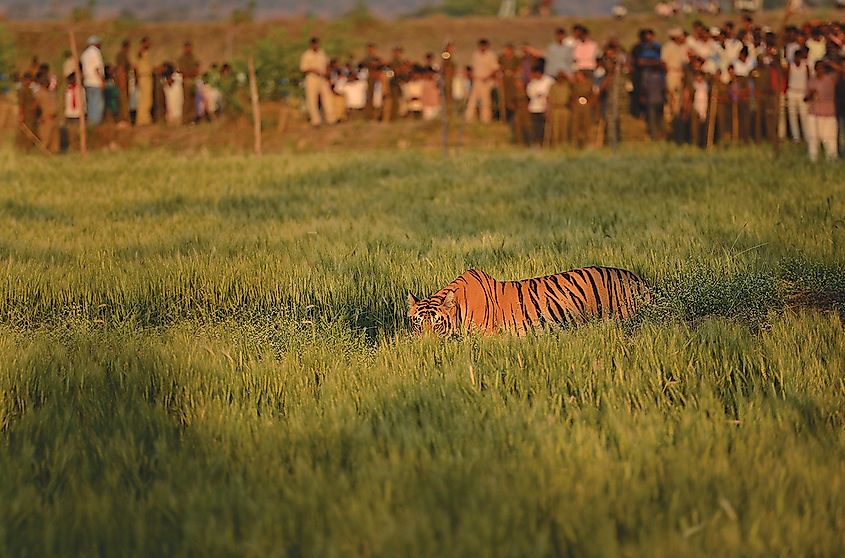
A tiger strays into a crop field in Chandrapur District, Maharashtra, attracting hordes of curious onlookers. Image credit: Nikhil Tambekar
"Our research findings showed that several factors influenced a household's consumption of firewood. One of the most prominent ones was the usage of LPG. Homes with LPG automatically had a substitute for firewood for cooking purposes. The complex interplay of several other factors like female education level, the household income, availability of entertainment options like television, etc., also decided the level of firewood consumption," stated Pooja Dewoolkar, Economist, WCT.
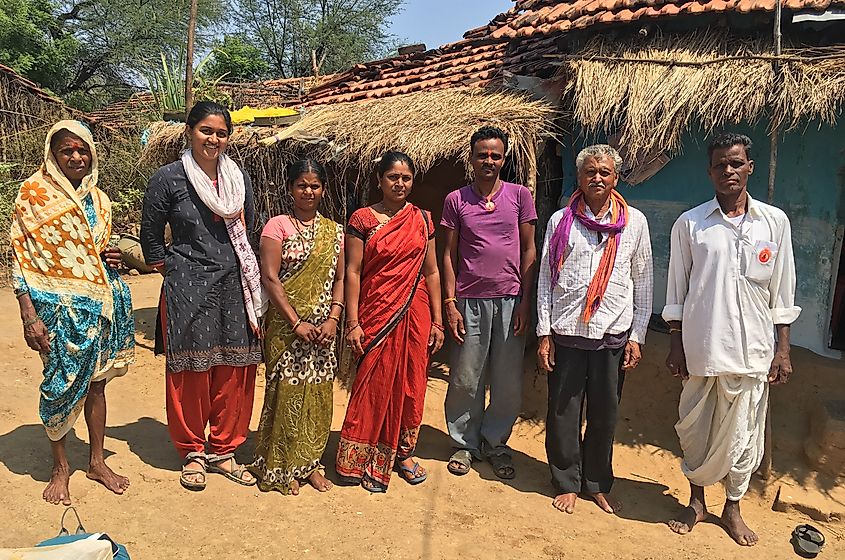
With more than 30 percent of the households adopting the Water Heating system (bumbb in Marathi) in the first year itself, the community’s response has been highly encouraging. Ms. Tamanna Ahmed, a Development Researcher with WCT (second from left) with villagers in Maharashtra’s Chandrapur District. Photo credit: Rutuja Dhamale/WCT
Data collected by the research team showed that as incomes increased, fuelwood usage also increased in households in the study area. With more money flowing in, people's preference for community assets decreased. It led to a shift towards individualism which automatically raised the per capita firewood consumption. However, the team also realized that this was where they could actually intervene.
"Our research helped us understand that increased aspiration levels of the people led to greater energy consumption in the form of firewood. But the aspirational lifestyle of these people also meant that they would invest in products like a mixer or even an LCD television set or anything that would appeal to them and cater to their needs. It is this mindset of the people that we decided to harness to design an intervention that would bring down their fuelwood consumption," said Aniket.
The researchers found that the villagers in the study area used fuelwood for two main purposes - cooking and water heating. Government subsidies on LPG allowed many households in the area to adopt its use for cooking and that decreased fuelwood use by about 39%. Water heating, however, was still an area where heavy usage of firewood continued.
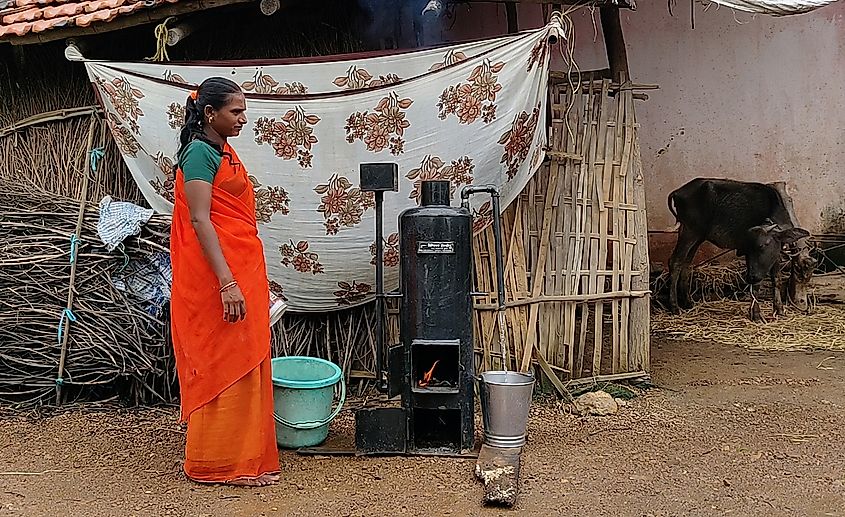
Suited perfectly for water heating in Indian villages, where other water heating technologies are either unaffordable or environmentally unsustainable and unhealthy, the bio-mass fired water heater (bumbb) uses just one-third of the fuelwood consumed by the traditional wood-based stove (chulha) to heat the same quantity of water. Photo credit: Prathamesh Shirsat/WCT
Thus, WCT introduced the "Heater of Hope," to the villagers in Bramhapuri. An efficient and affordable water heating solution, the bumbb consumes just one-third of the fuelwood needed to fuel the traditional wood-based stove to heat the same quantity of water. Moreover, crop residue, dried leaves, dung cakes, and used paper can also be used to feed the bumbb.
Public announcements, jingles in the local language, and displays of posters in target villagers were used to raise awareness about the benefits of the bumbb. Live demonstrations in each of our target villages helped familiarise the local communities with the new water heater.
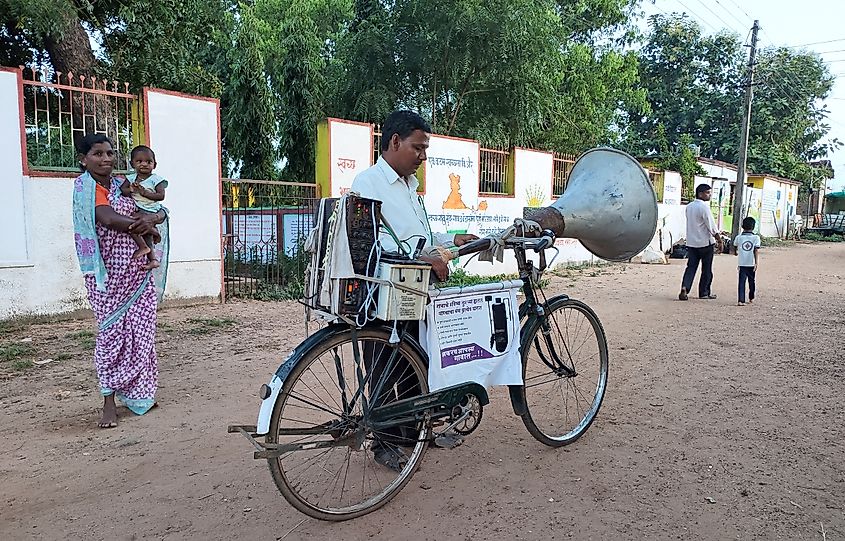
Promotional activities to enhance the adoption of the water heater using public announcement systems in villages. Photo credit: WCT
The team received an overwhelming response from the villagers with over 30% of the households adopting the bumbb in the first year itself. It was offered to them at 25% of the original production cost of the water heater. The remaining 75% was contributed by WCT through generous support from HT Parekh Foundation.
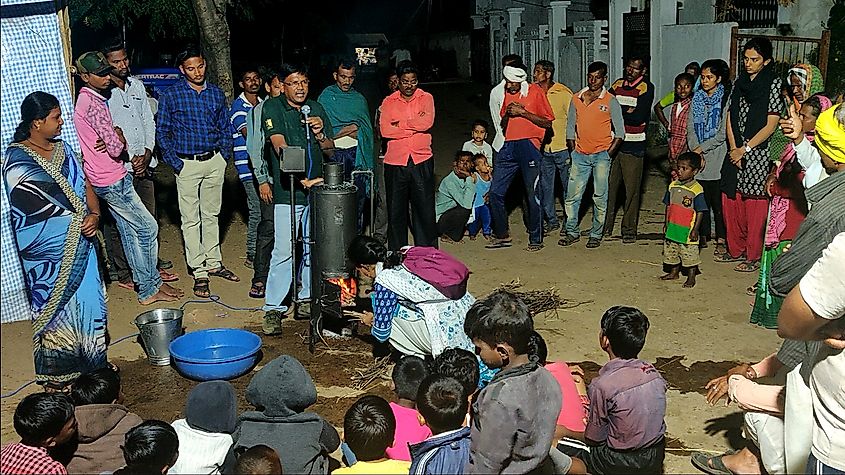
A live demonstration of the water heater by the WCT team in one of the pilot villages in Brahmapuri Forest Division for the benefit of the locals. Photo credit: WCT
The water heater installed in the homes of Bramhapuri now serves as the symbol of hope for a brighter future. The statements made below are proof of the fact:
"I have been using the bumbb for six months now. Previously we had to heat water four times for our family of four. Now, we get hot water for all in one go. Our dependence on firewood has also reduced from 2-3 cartloads a year to zero. It also saves our time spent in firewood collection. And unlike the chulha used earlier, we do not even get exposed to the smoke. Neither do we have to keep blowing air into the burning fuel to keep going," said Ms. Kavita Kumbhale from the Kitalri village.
"Our demand for 2-3 cartloads of firewood has been replaced by only half a cartload a year following the adoption of the bumbb to heat water," informed Mr. Sriranga Nagose who also adopted the bumbb offered by WCT. "Now, we use anything from crop residue to dung cake to heat water. Also, we get hot water for four at one go instead of one at a time with the help of the new water heater. We definitely find the bumbb a much better option than the traditional chulha used by us previously," he continued.
According to Tamanna Ahmad, Development Researcher of WCT, the new heater addresses not just the issue of forest degradation but a host of other issues such as health, especially women's health. It is the women who walk kilometers to collect firewood and get exposed to toxic smoke while using the traditional chulhas. The response of the people to the program showed their readiness to change for the better.
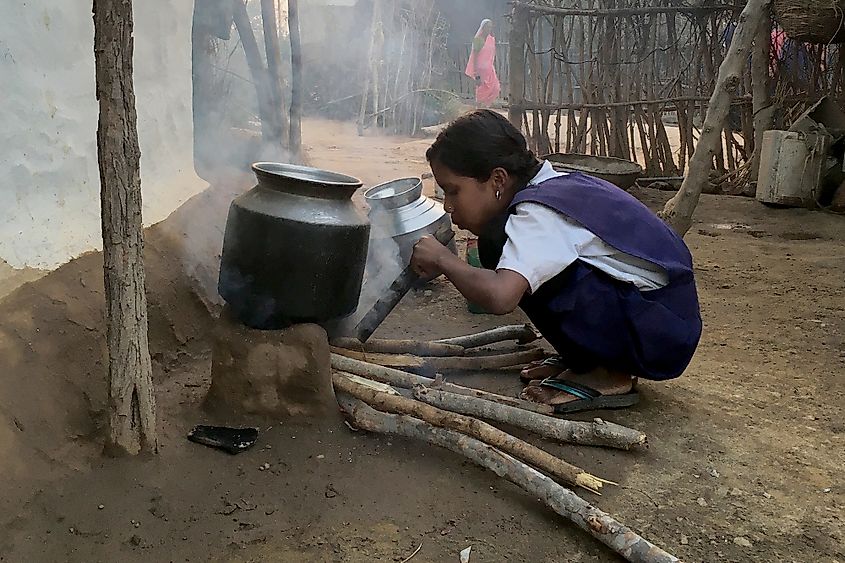
WCT’s research shows that a significant amount of wood collected by villagers in Chandrapur District of Maharashtra is used for water heating, exposing mostly women to the ill-effects of the smoke as well as the burden of carrying headloads of fuelwood from the forest. Photo credit: Tamanna Ahmed/WCT
From the above, it becomes quite clear that the use of the new water heater is associated with multiple benefits ranging from reduction in forest degradation to improvement in women's health. Above all, however, is its use as a way and means to mitigate human-wildlife negative interactions that, according to experts, will intensify manifold in the coming decades in a fast-developing India.
"Fuelwood collection in the forests increases the chances of villagers encountering large carnivores like the tiger. Interventions like the water heater that reduce the visit of villagers into wildlife habitats thus helps reduce the possibilities of such interactions between human and wildlife," said Dr. Andheria.
With success in the initial stages of implementation of the project, the WCT team is now aiming to scale-up the distribution of the water heater to other areas as well.
"Some tiger reserves managed by the government have already applied for funds so that they can implement the project in the buffer zones of these reserves. Also, the project has been planned on empirical data and large datasets that show enough evidence of the existing demand for such interventions. Currently, our team of researchers is working in the field to collect data and quantify the results of the effects of the usage of the new water heater in the villages of our study area. With such knowledge, scaling-up will become easy. I am sure in the future, the "Heater of Hope" will reach more homes in remote forested landscapes like Bramhapuri to ensure a brighter future for the people and wildlife co-inhabiting such places,” said Dr. Andheria.











